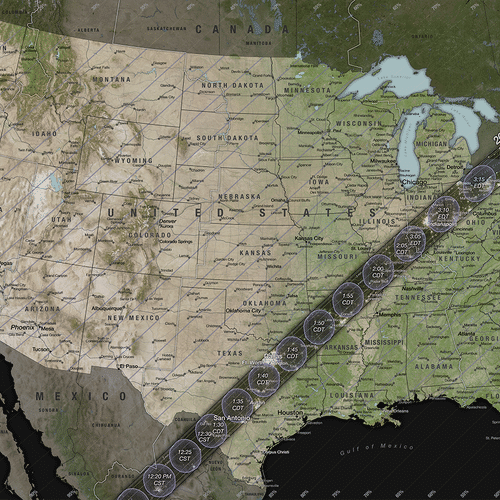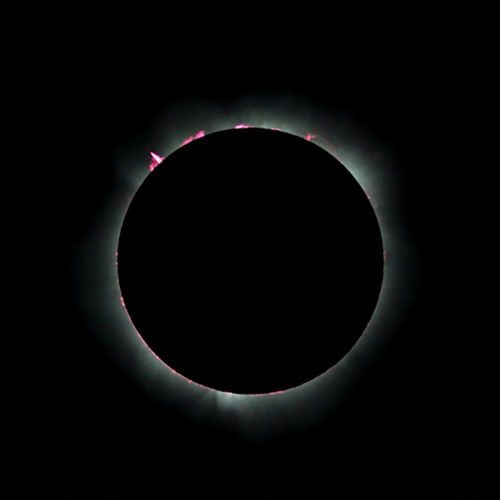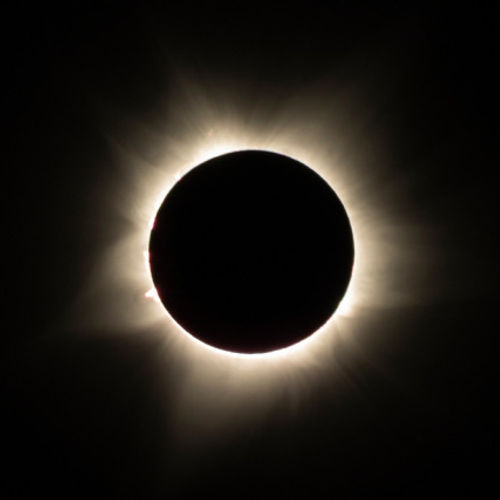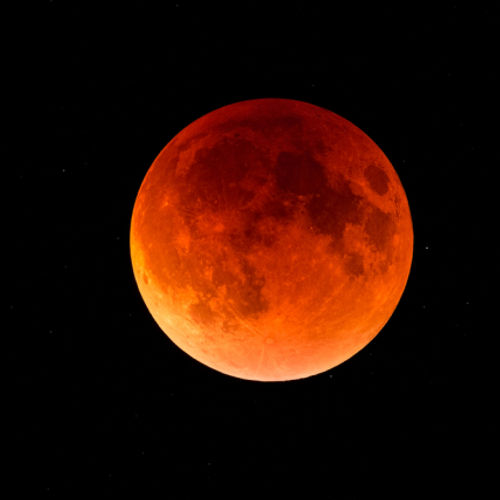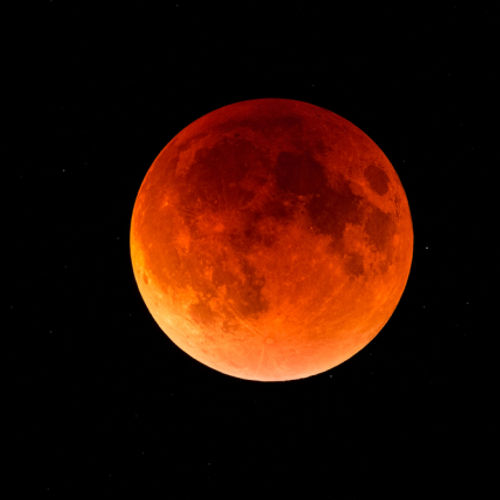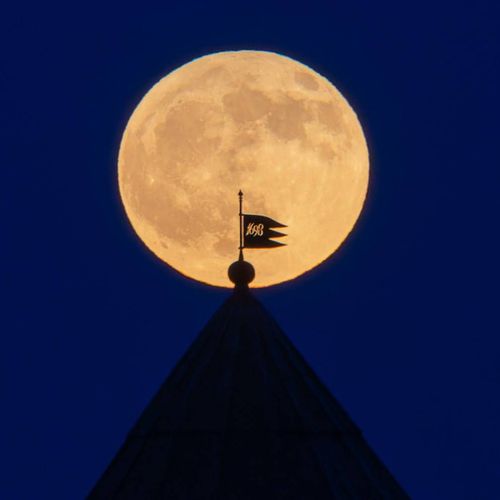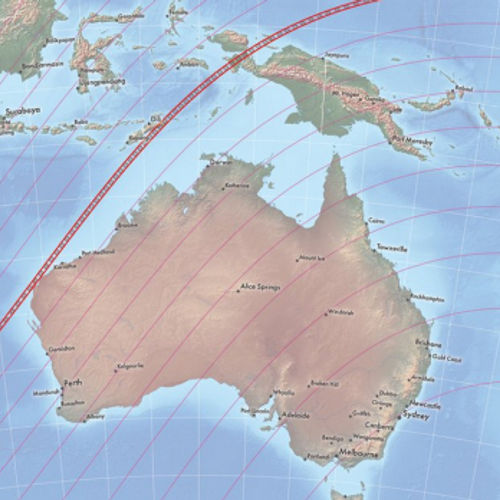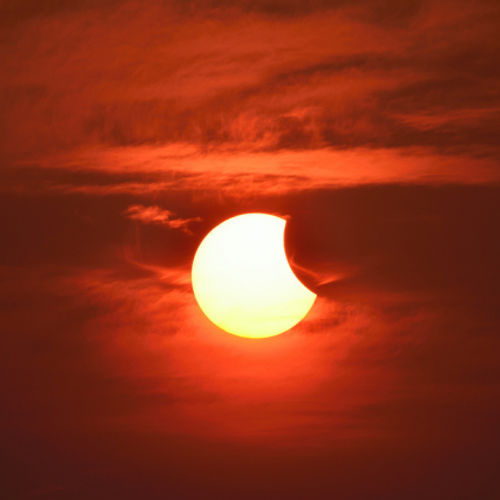
| Added | Sat, 16/04/2022 |
| Источники | |
| Дата публикации | Sat, 16/04/2022
|
| Версии |
In ancient times, people perceived astronomical events as something mysterious and frightening. Comets, for example, served as a sign of future misfortunes and catastrophes, and solar and lunar eclipses were explained by the machinations of demons and spirits. The inhabitants of the ancient world were sure that eclipses did not bring them anything good. And really, how to explain the onset of pitch darkness in broad daylight in the absence of astronomical instruments? So, in China, a dragon was considered the cause of a solar eclipse, and in India toads, snakes and even werewolves. In fact, similar legends are found among different peoples, and many attributed the disappearance of the Sun to a hungry bear or dog. Fortunately, we live in the XXI century and we can explain this amazing phenomenon: a solar eclipse occurs when the Moon passes between the Earth and the Sun, thereby partially obscuring the star for observers on Earth.
Where does the Sun disappear to?
A solar eclipse is one of the most dramatic celestial phenomena. Eclipses occur when the Earth, the Moon and the Sun align in the same plane, and the Moon passes between the Earth and the Sun, partially or completely obscuring the star. However, the fact of the eclipse itself is... an accidental result of celestial mechanics.
It is believed that the Moon formed about 4.5 billion years ago and gradually moved away from the Earth by about 4 centimeters per year. Now the satellite is at an ideal distance and can seem as big as the Sun, whose diameter is 1.4 million kilometers, which is 400 times the diameter of the Moon (it is approximately 3,500 km). Do you feel the difference?
Previously, the Moon was located very close to the Earth and may have covered the entire sky.
A total solar eclipse is a rare event in which the diameter of the Moon will become the same as that of the Sun. Our small satellite closes the native star in a certain place, plunging the Earth into a special type of darkness.
On average, a total solar eclipse occurs approximately every 18 months. But whether the alignment will lead to a total solar eclipse, partial or annular, depends on several factors. Interestingly, the moon's shadow is a narrow strip on the Earth's surface, 150-200 km wide. And you can see how it covers the Sun only in this strip.
What are eclipses like?
Researchers distinguish four types of solar eclipses: total, partial, annular and hybrid. During an eclipse, the moon's shadow glides over the Earth, which seems to its inhabitants, who are located in the shadow, a total eclipse.
Let's clarify a little: an eclipse is considered private when the Moon covers only a part (edge) of the solar disk; if the lunar shadow hides the entire disk, we are talking about a total eclipse.
Every eclipse, as if it were lunar or solar, is actually a play of light and shadows cast by celestial bodies.
In the case when the Moon covers the central part of the Sun, leaving a bright ring, the eclipse is called annular. The latter is a hybrid, that is, an eclipse that begins as an annular one, but eventually becomes complete. Hybrid solar eclipses are the rarest type of all.
And, perhaps most importantly, solar eclipses are visible only from the area on Earth where the shadow of the Moon falls. The closer you are to the center of the shadow's trajectory, the bigger the eclipse will seem to you. Note also that the duration of a total solar eclipse on average does not exceed 7.5 minutes, and private – about two hours. The shadow of the Moon moves relative to the Earth at a speed of 1 km/sec. Also during the total eclipse phase, bright stars and planets can be seen in the sky.
When will there be a solar eclipse?
The first solar eclipse in 2022 will occur on April 30. You can see how the moon's shadow completely covers the Sun in some parts of Antarctica, South America, as well as in the Pacific and Atlantic Oceans. The upcoming eclipse will cover a maximum of 54% of the Sun.
According to forecasts, the eclipse will begin at 23.28 Moscow time. It will be partial and invisible to Russians, but in South America, Antarctica, the Pacific and Atlantic Oceans, the Sun will be covered by the moon's shadow, astronomers report.
The eclipse on April 30 will take place just four days before the Moon reaches its apogee — its farthest point from Earth. The upcoming eclipse is the first of two private solar eclipses in 2022. The second will take place on October 25, and the next such event will come in 2023. Interestingly, a total lunar eclipse follows a private solar one and will take place just two weeks later, on May 16.
How to observe a solar eclipse?
The most important thing an interested observer needs to know is that it is impossible to look directly at the Sun, even when it is partially covered by the Moon. If you do not protect your eyes, you can damage the retina and even go blind. NEVER look at the Sun and its partial eclipse without protection.
When the Sun is completely obscured by the moon's shadow, the solar corona opens up to observers on Earth — the rarefied outer atmosphere of our star. By the way, ordinary sunglasses are not designed for observing the Sun. Of course, they reduce the harmful effects of light on the eyes, but, alas, not enough. But from reflected and scattered light, for example, from rays falling on trees and houses, such glasses protect very well.
Lack of eye protection (or improper use) can lead to retinal burns and eye damage.
So how do you watch the Sun disappear in broad daylight? With welding glasses. According to ophthalmologists, this is the best way to observe an eclipse. There are also special glasses and filters for telescopes, which can be purchased in specialized stores.
But various films and colored glasses cannot be used, since they do not protect the eyes from damage. The fact is that our eyes do not perceive the entire light spectrum as a whole, including ultraviolet and infrared. And when these invisible rays focus on the retina, they damage its structure.
Thus, the most reliable option for observing a solar eclipse is special glasses, including welding ones. But even if you have prepared and acquired reliable eye protection, the weather can play against you – if the sky is covered with clouds, then you will not be able to see any eclipse.
So if the dear reader finds himself in South America, Antarctica or the Pacific Ocean on April 30, he will have time to prepare in advance and will be able to protect his eyes from aggressive solar radiation.
Новости со схожими версиями
Log in or register to post comments

